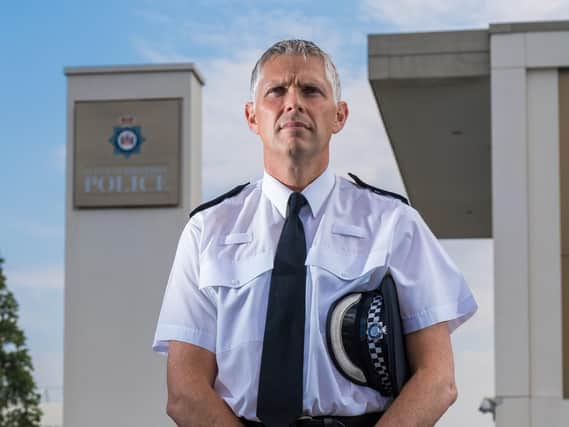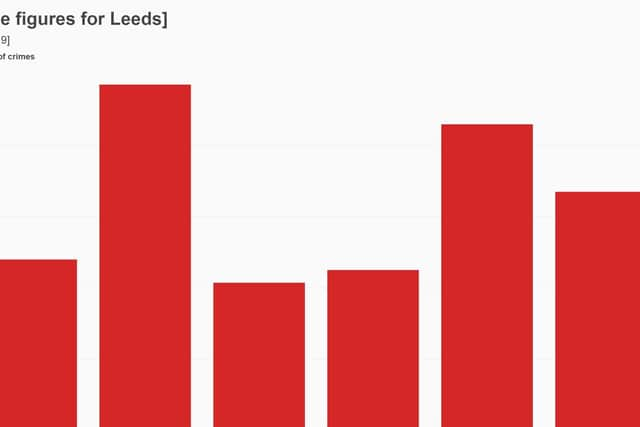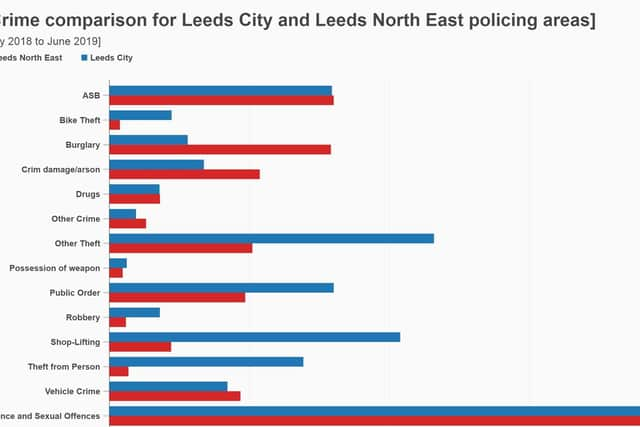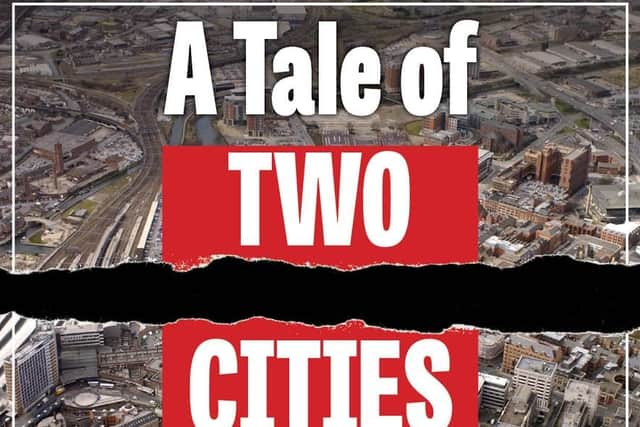What is it like to police such a diverse city as Leeds?


These are the observations of the man in charge of policing a diverse city like Leeds.
Advertisement
Hide AdAdvertisement
Hide AdChief Superintendent Steve Cotter says that while some people will commit crime regardless, some people commit crime due to other background issues that have pushed them into a life of criminality.


In a special look at crime as part of the Yorkshire Evening Post’s A City Divided series, we look at how social inequality and crime can be interlinked - and how the police are looking at the causes as much as the consequences.
Today when an arrest is made and a suspect is taken to Elland Road police station there is access to mental health staff and drug treatment services to name but a few.
These are the sorts of referrals that via other channels might take weeks or even months to get – and these are just at a police station.
Advertisement
Hide AdAdvertisement
Hide AdBut it reveals more of holistic approach being undertaken by West Yorkshire Police to understand the causes of crime for most people and try and address the reasons why people offend, rather than continue in the merry-go-round of custody, court and re-offending.


Ch Supt Cotter said: “Over a long period of time, looking at the local area and looking at the causes - a lot leads back to vulnerability and that is for a whole host of reasons. “A criminal justice outcome is one outcome but a more broader partnership response where we tackle the causation and why they are committing crime is more helpful.”
Statistics
However, when analysing crime statistics it is easy to see why some people still favour the 90s’ approach.


In the period between July 2018 and June 2019 in the six policing districts that cover Leeds (City, East, North East, North West, South and West) each area saw no further action taken in more than 70 per cent of crimes.
Advertisement
Hide AdAdvertisement
Hide AdThis was largely down to being unable to identify or prosecute a suspect. In few cases it was deemed not to be in the public interest.
In the Leeds City district there were a total of 16, 407 crimes, according to West Yorkshire Police data, for the period July 2018 to June 2019 and 1,200 crimes for June of this year alone.
Data for that 12 months’ span for Leeds City, shows that crimes classed as violence and sexual offences were the most prevalent with 3,870, or 23.5 per cent, committed.
Shoplifting and anti-social behaviour were the next most common type of crime with 2,078 and 1,590 offences respectively.
Stereotypes
Advertisement
Hide AdAdvertisement
Hide AdWhen we met Ch Supt Cotter he said that from the area between Wetherby to the Bradford border there had been just 14 burglaries in the last 24 hours. While that is 14 people who are victims, given the geographical area that covers, it is pretty low by comparison and that in fact there had been more reports of missing people.
Burglary makes up just over three per cent of the crime map for Leeds City and the police boss says stereotypes don’t always add up when it comes to crime.
He said: “If you look at the stereotype that people that get involved with crime is a class-based thing – that is where you will get it wrong. You have to be more understanding of the causes.“There are some people that just want to commit crime and make an awful lot of money and we rightly arrest them. There are others who live life on the proceeds of crime and in a nice area and not come into your thought process, but they are harming my community.”
At the opposite end of the scale is “low-level” problem solving, which Mr Cotter says, if you get right leads you to the same point of reducing crime figures.
Advertisement
Hide AdAdvertisement
Hide AdOfficers, especially local neighbourhood policing teams, work in schools, some are permanently based in secondary schools. Others might work with Street Support, a project launched last year to work with rough sleepers, the homeless and other vulnerable people on the streets in Leeds city centre.
Preventative
“Fundamentally we respond to 999 calls when people really need us but let’s get involved in preventative work before people get involved in criminality.“Adverse childhood experiences is one, and people have life experiences when they are young, but we are linking with schools to help deal with that. Domestic abuse, in my view, feeds out of adverse childhood experiences.
“Street Support is a compassionate approach. Why are people sleeping on the streets when they don’t need to? Sometimes enforcement is the right outcome, sometimes housing or a health approach is better. People say ‘lock them up’ but we end up arresting someone that just needed accommodation.
“There is a point where people think ‘I need to change what I am doing’. That is when all these services are here to keep making these offers.“Is it more expensive than arresting people? The cost is not cheap. The cost of prison is not cheap so to reduce offending does work for us.”